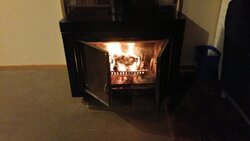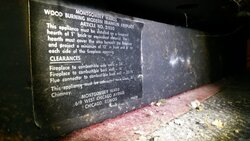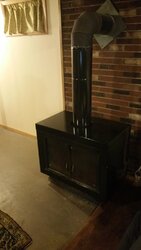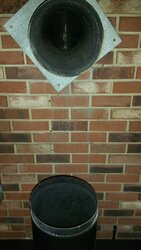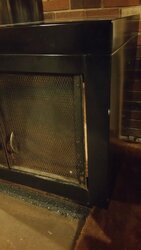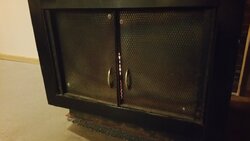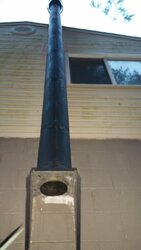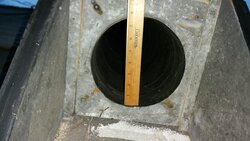No mention of a damper either. (possibly top mounted?) Improper use of one is going to cause smoke and smell.
As Rich L mentioned above, negative pressure from mechanical fans or other appliances reduces the air pressure at the intake of your Fireplace reducing the push of air into it headed up chimney. It all goes back to the basics of the chimney making it work.
I was confused by the title calling it a "dragon" which is a term for an air tight stove burning with too little air, and using stove in the title. To little air should not be your problem, and too much air should burn fast with little to no smoke.
The part that confirmed you had an air tight stove was mentioning adding door gasket material to seal doors. That is for an air tight stove to assure all air is controlled through air intake only. It appears to have screen doors, so the gasket is not necessary. We're on the same page now

With screen during open door burning, (older double door stoves and fireplaces) the only air control you have is with the flue or pipe damper on the exhaust. Normal operation is getting flue hot (above 250* to top) and slowly close damper until smoke starts to roll in at top. Open slightly, and that is your setting for the flue temp and atmospheric pressure at the time. That captures the most heat while venting combustion products. Learning the damper will get the most heat out of it.
Not only does a fire simply require air, appliances are normally designed to provide 40% more oxygen than required for a cleaner burn.
The reason you need air is to mix with the flammable gasses expelled from the fuel as it heats causing the visible flame.
Turbulence creates a better mix. So in your case, velocity and the way you load with air space and making the flame change direction gives a cleaner burn. (Velocity is controlled with damper) You can do a lot wrong to cause smoke. Not enough air produces charcoal. Here's the reason more air than necessary is required in a controlled fire; Air can't mix with the flammable gas coming out of a log - it mixes outside the log. Only excess oxygen molecules that wander onto the surface cause ignition of carbon monoxide. (Carbon Monoxide and Hydrogen are created by water vapor being expelled from log and contacting the charcoal layer) That is the blue flame when burning properly near the wood. Hydrogen burns clear.
20 feet at 200* f (flue gas minus outside temp) puts your chimney right in the middle of the chart at -.08 inches of water column. Some higher performance appliances will give WC required, or the manufacturer can give that to you. That's normally done with coal appliances since draft becomes much more critical and is set to exact requirement with a barometric damper.
Figure a little less since it looks square in picture probably 7 1/2 square ? equaling 56.25 square inches where a round 8 inch is 50.24 square inches.
To really learn about using wood as energy, I recommend finding "The Woodburners Encyclopedia" by Jay Shelton that comes up on eBay. It's the best I've found covering all aspects of wood burning, appliances and venting. No matter what stove you end up with, you will use the information in that book.


